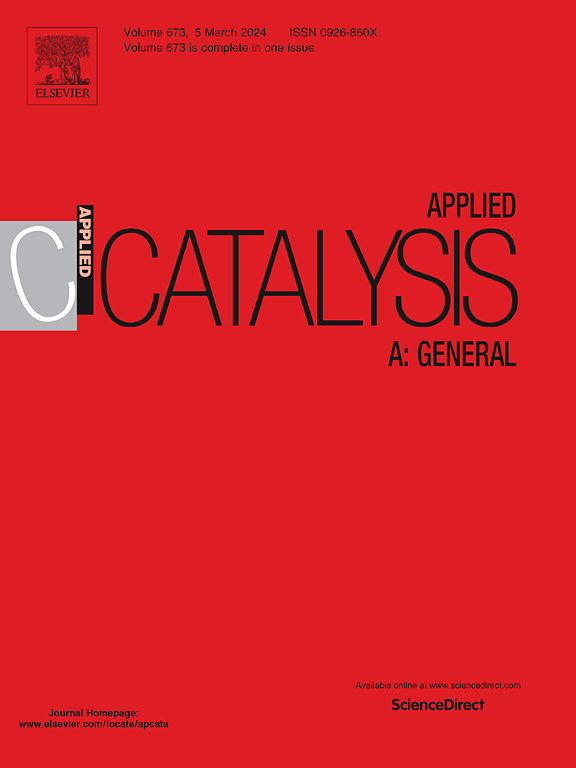Base-free CO2 hydrogenation to methyl formate over Re/TiO2 catalysts: Effects of the crystal phase of TiO2
IF 4.8
2区 化学
Q2 CHEMISTRY, PHYSICAL
引用次数: 0
Abstract
The crystal phase of TiO2 plays a crucial role in tuning the catalytic performance of Re/TiO2 catalysts for base-free CO2 hydrogenation to methyl formate (MF). In this study, we investigated Re species supported on TiO2 with different crystal phases (P25, rutile, and anatase) to elucidate their structure–activity relationships. Among them, P25-supported Re catalyst (denoted as Re/TiO2-P) exhibited the highest catalytic performance, achieving a turnover frequency (TOF) of 4.8 h–1 at 150 °C for 2 h, along with excellent stability over five consecutive cycles. By reducing the catalyst dosage, the TOF was further increased to 10.3 h–1 at 160 °C. Comprehensive characterization revealed that the superior performance of Re/TiO2-P arises from its relatively weak metal-support interaction, which facilitates the reduction of Re7+ to Re4+, the key active species for H2 activation. These findings highlight the crucial influence of the TiO2 crystal phase on the oxidation state and catalytic behavior of Re species, offering valuable insights for designing efficient catalysts for base-free CO2 hydrogenation to MF.
Re/TiO2催化剂上无碱CO2加氢制甲酸甲酯:TiO2晶相的影响
TiO2的晶相对Re/TiO2催化剂催化无碱CO2加氢制甲酸甲酯(methyl formate, MF)的性能起着至关重要的调节作用。在本研究中,我们研究了不同晶相(P25、金红石和锐钛矿)负载在TiO2上的Re物种,以阐明它们的构效关系。其中,p25负载的Re催化剂(表示为Re/TiO2-P)表现出最高的催化性能,在150°C下,2 h的周转频率(TOF)达到4.8 h - 1,并且在连续5个循环中具有优异的稳定性。通过降低催化剂用量,在160℃时,TOF进一步提高到10.3 h-1。综合表征表明,Re/TiO2-P的优异性能源于其相对弱的金属-载体相互作用,有利于将Re7+还原为Re4+,而Re4+是H2活化的关键活性物质。这些发现强调了TiO2晶相对Re的氧化态和催化行为的重要影响,为设计无碱CO2加氢制MF的高效催化剂提供了有价值的见解。
本文章由计算机程序翻译,如有差异,请以英文原文为准。
求助全文
约1分钟内获得全文
求助全文
来源期刊

Applied Catalysis A: General
化学-环境科学
CiteScore
9.00
自引率
5.50%
发文量
415
审稿时长
24 days
期刊介绍:
Applied Catalysis A: General publishes original papers on all aspects of catalysis of basic and practical interest to chemical scientists in both industrial and academic fields, with an emphasis onnew understanding of catalysts and catalytic reactions, new catalytic materials, new techniques, and new processes, especially those that have potential practical implications.
Papers that report results of a thorough study or optimization of systems or processes that are well understood, widely studied, or minor variations of known ones are discouraged. Authors should include statements in a separate section "Justification for Publication" of how the manuscript fits the scope of the journal in the cover letter to the editors. Submissions without such justification will be rejected without review.
 求助内容:
求助内容: 应助结果提醒方式:
应助结果提醒方式:


